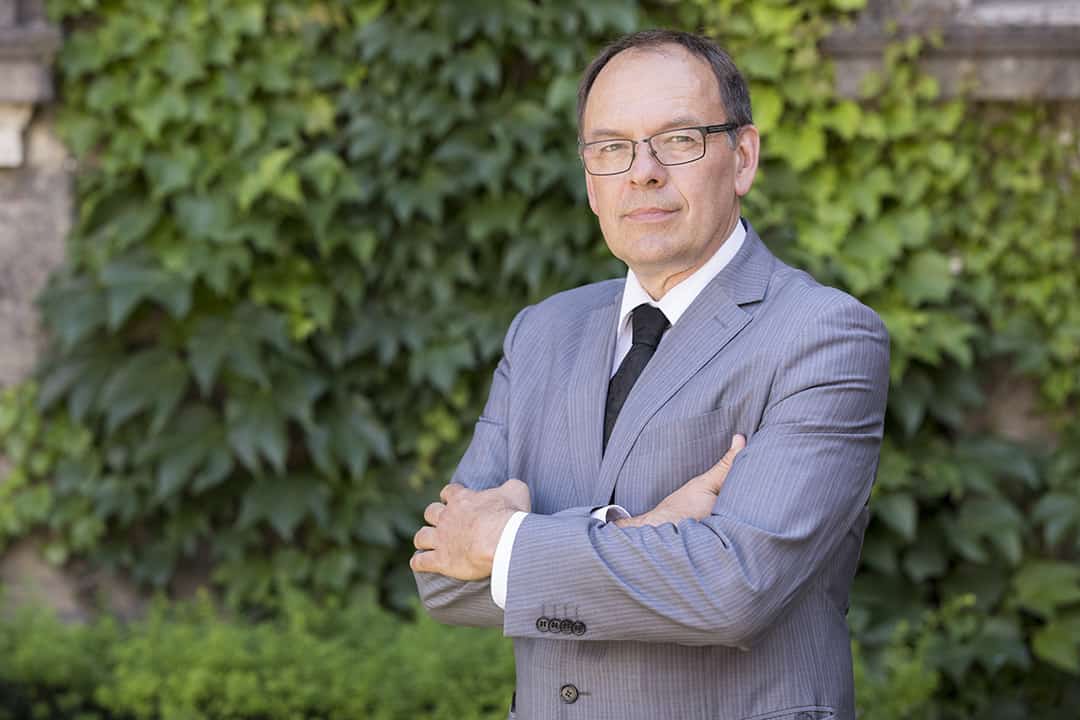The University of Toronto’s new Chief Information Officer, Bo Wandschneider, assures us that technological advancements and integration are part of the university’s long-term future. In conversation with The Varsity, Wandschneider discussed the experience he brings to the table, “cultural changes,” and his stressful first week on the job.
When U of T announced the hiring of Wandschneider on March 15, 2017, a news brief on the Information Technology Services (ITS) website described him as a “truly collaborative leader” and a “visionary thinker and effective strategist.” This was put to the test during the first week of Wandschneider’s tenure.
One of the new CIO’s first tasks was to migrate 220,000 U of T email accounts to Canadian data servers from US-based ones. The migration took longer than expected, with service outages scheduled to take place from April 28 to May 1, lasting until May 5. “The challenges with that migration were unfortunate and, I’m going to say unacceptable,” Wandschneider said.
“At the end of the day it’s fairly simple. Lots of issues. It’s very complex but really simple. The size of the migration here was just big and the testing that we did beforehand didn’t scale the way that we had expected it to scale,” added Wandschneider. “It just took a long time for every step of the migration. There’s lots of checks and balances that happen through the process to make sure that they all get migrated properly and all those steps just took longer than we wanted to.”
While Wandschneider wouldn’t guarantee that no further issues would arise during his time as CIO, he stated that his ITS team is “really good at fighting fires and dealing with issues that arise and resolving those.”
Wandschneider got his start in information technology while pursuing his undergraduate degree at Queen’s University in Kingston, Ontario. At the time, he said, it was “very early days for that sort of thing,” and his experience with using computer mainframes, digitization, and statistical programming became useful when he moved on in his education.
“I started working with grad students and researchers and one thing led to another. It was right at the beginning of the evolution to micro computers, so I sort of accidentally fell into that sort of role.”
Having worked in the CIO portfolio at the University of Guelph and later at Queen’s University, Wandschneider is experienced in a variety of higher education-based projects, such as integrating learning management software, managing and reorganizing ITS leadership teams, and email migrations.
In his new role, Wandschneider expressed excitement about the integration of university faculty and staff to the Microsoft Office 365 suite of software and learning tools, stating that Office 365 is “very standardized in terms of what you get,” and that he would like to see how students, faculty, and staff interact in that online environment.
Wandschneider continued to emphasize cohesion and standardization within the university. According to him, the ITS team is in the midst of selecting a new learning management system to consolidate learning software into one cohesive program. The intention is to pilot this project in the upcoming fall and winter terms and to move into full production with the new software in the fall of 2018.
In tune with his collaborative nature, Wandschneider said he intends to implement a “student advisory committee” in the information technology realm. Having struck up similar advisory committees previously, he believes that talking to students will help ITS find the right services on which to focus. He has already been in contact with the UTSU regarding such a committee, adding that collaboration with students is “critical for sort of my philosophy on how you support technology in higher ed. Getting that student engagement and hearing what they’re thinking is critical.”
He hopes the council will meet on a regular basis to engage with the student body directly.
He further highlighted some key areas wherein he believes a “cultural change” must take place — namely agility, transparency, and client focus.
“I’d like for the organization to share what we’re doing [and] what we’re thinking and get [the community] involved in the journey as well. And I think that’s the cultural shift, right?”
According to Wandschneider, consultation for developing new services can be so time-consuming that when it comes time to implement new technology, “the world has moved beyond us.” This is a challenge he hopes to overcome during his time as CIO.


